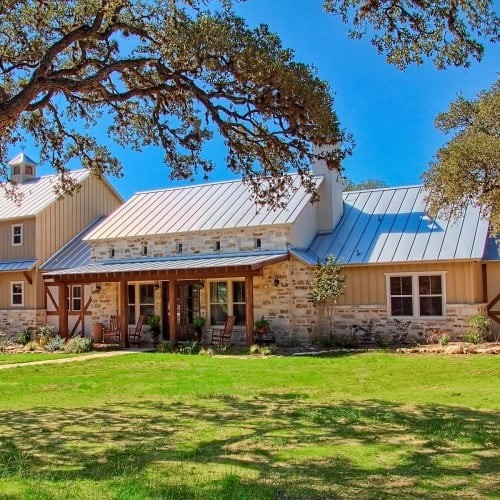Kelli Dilday is an architect in Texas and has written master plans and renovation grant applications for building owners. In the following article, Kelli Dilday explains which architectural styles have been the most influential in both residential and commercial developments throughout the state.
Architecture has always been a reflection of culture, history, and geography. It is the perfect marriage between art and functionality, blending aesthetics with practicality. This is especially true for the state of Texas, which boasts a diverse architectural landscape influenced by various styles over the years.
Here, Kelli Dilday will take a closer look at some of the architecture styles that have left an indelible mark on building design in Texas.
Spanish Colonial Architecture
Kelli Dilday explains that Texas has a strong Spanish influence, given its long history as a colony of Spain. This is clearly reflected in the state's architecture, particularly in cities like San Antonio and El Paso. The Spanish colonial style originated in the 16th century and is characterized by its simple, rustic design with thick walls made of adobe or stone. This style is also known for its use of courtyards, arches, and red-tiled roofs.
One of the most iconic examples of Spanish colonial architecture in Texas is the Alamo in San Antonio. Originally a mission church built by Spanish Franciscan friars in the 18th century, it now serves as a symbol of Texas' struggle for independence. The Alamo's distinctive facade with its arched entrance and bell tower is a testament to the enduring legacy of Spanish colonial architecture in the state.
Victorian Architecture
In the late 19th and early 20th centuries, Kelli Dilday reports that Texas saw a surge in Victorian-style architecture. This style is characterized by its ornate, intricate details and use of multiple colors. It was heavily influenced by British architecture of the same era and became popular among wealthy residents in cities like Galveston and Houston.
One notable example of Victorian architecture in Texas is the Bishop's Palace in Galveston. This grand mansion built in 1892 features a mix of Gothic, Renaissance, and Romanesque styles, with its most distinctive feature being its intricate exterior made of stone, brick, and terra cotta.
Art Deco Architecture
Kelli Dilday explains that as the 20th century progressed, Texas saw a rise in Art Deco architecture. This style originated in France in the 1920s and is characterized by its bold geometric shapes, vibrant colors, and lavish ornamentation. It became popular in Texas during the 1930s and can be seen in buildings such as the Paramount Theatre in Austin and the Magnolia Building in Dallas.
The Magnolia Building, built-in 1922, is an iconic example of Art Deco architecture in Texas. Its distinctive green terra cotta facade and ornate detailing make it a standout among the city's skyscrapers.
Modernist Architecture
The post-World War II era brought about a shift in architectural styles, and Texas was no exception. Modernist architecture became popular in the state, characterized by its sleek lines, minimalism, and use of new materials such as glass and steel. This style is all about form following function, with an emphasis on simplicity and efficiency.
One prime example of modernist architecture in Texas is the Mies van der Rohe-designed Seagram Building in Houston, according to Kelli Dilday. Completed in 1952, this office building features a steel and glass curtain wall facade, embodying the clean lines and minimalism that define modernist architecture.

 Texas Vernacular Architecture
Texas Vernacular Architecture
Texas has its own unique architectural style known as Texas Vernacular. This style emerged in the 19th century as a response to the state's harsh climate and rural lifestyle. It is characterized by its use of local materials like limestone, adobe, and timber, and simple, practical design elements such as high-pitched roofs and wide porches.
Kelli Dilday says one well-known example of Texas vernacular architecture is the King Ranch House in Kingsville. Built-in 1912, this mansion features a distinctive combination of Spanish and American influences, with its red tile roof and wrap-around porch.
Postmodern Architecture
In the late 20th century, Texas saw a resurgence of interest in classical architecture with a modern twist. This gave rise to postmodern architecture, which combines traditional elements like columns and arches with modern materials and techniques. This style is all about playful experimentation and rejecting the rigid rules of modernism.
One of the most iconic postmodern buildings in Texas is the Chapel of St. Basil at the University of St. Thomas in Houston. Designed by renowned architect Philip Johnson, it features a striking mix of classical elements like columns and a dome with modern touches such as the use of stained glass and steel.
Conclusion
From Spanish colonial to postmodern, Kelli Dilday explains that Texas has a rich architectural history influenced by various styles. Each style reflects the unique cultural, historical, and geographical factors that have shaped the state. These styles continue to inspire and influence building design in Texas today, creating a diverse and dynamic landscape that is truly representative of the Lone Star State. Whether you are an architecture enthusiast or simply appreciate beautiful buildings, Texas has something for everyone to admire and appreciate. So next time you find yourself in the state, take a moment to look around and marvel at the diverse architectural styles that have left their mark on this great state.

 Texas Vernacular Architecture
Texas Vernacular Architecture